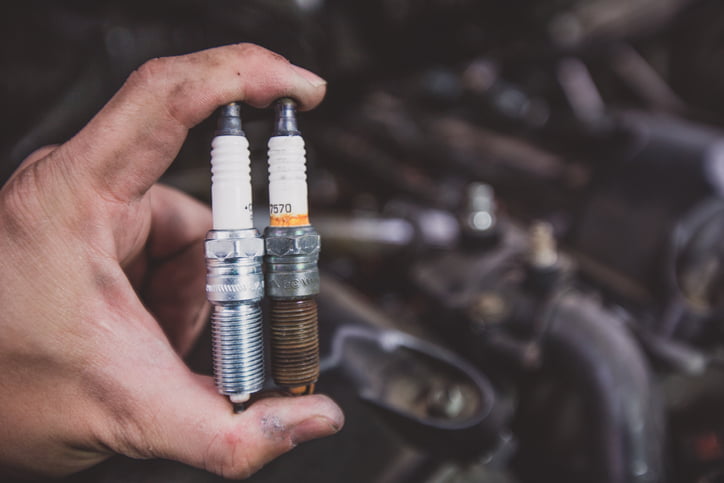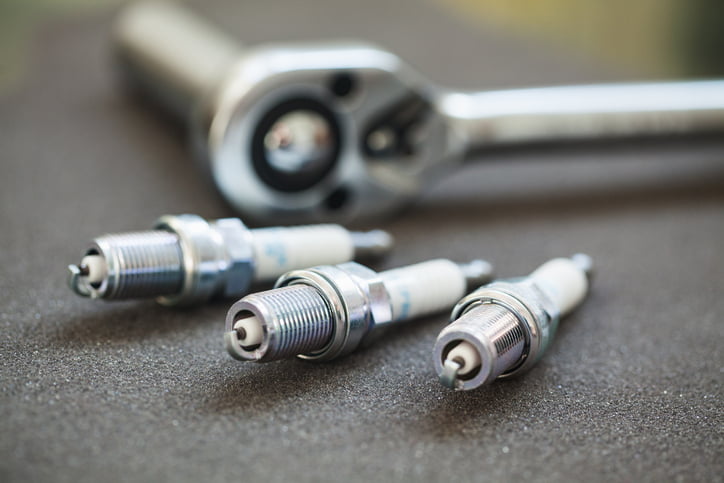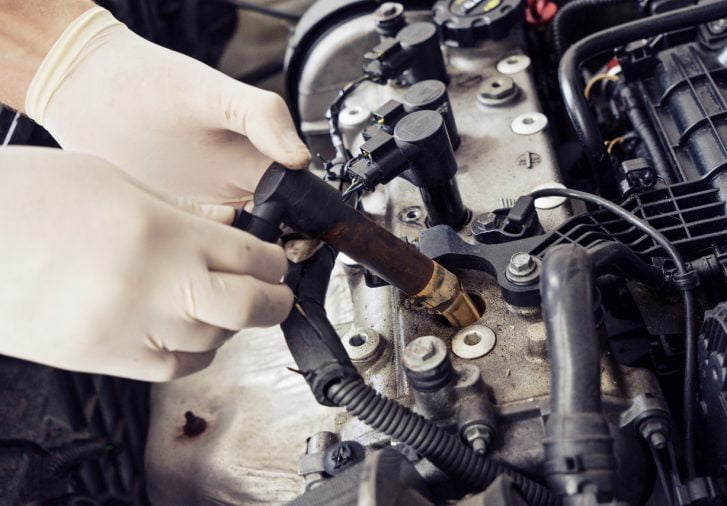Spark plugs are the unsung heroes of motoring, keeping our engines going with very little maintenance required. But, from time to time, spark plugs will need to be changed to make sure your car continues to offer the very best in performance and efficiency.

In this guide, you can find the basics of how to maintain spark plugs, including tips on checking, changing and buying the right spark plugs for your car. Use the links below to find the information you need.
Quick Links
- What Do Spark Plugs Do?
- How to Check and Change Spark Plugs
- How Often Should You Change Spark Plugs?
- What Are the Symptoms of a Bad Spark Plug?
- Types of Spark Plugs
What Do Spark Plugs Do?
Spark plugs create the electrical spark an engine needs to ignite. They ignite the fuel-air mixture in the combustion chamber and keep the engine burning fuel smoothly. They can also withstand extreme temperatures inside the engine, and will burn off any contaminants and particles which get into the combustion chamber from the fuel system – keeping it working at its optimum temperature.
Spark plugs work by creating an electrical current through two electrodes, which sends a spark between the electrode and the housing at the tip of the plug. Generally, spark plugs create around 20,000 volts when ‘firing’ the engine.
How to Check and Change Spark Plugs
While spark plugs are very durable and able to withstand extreme temperatures and conditions over many thousands of miles, they do need checking regularly to make sure they keep working efficiently. Everyday wear and tear coupled with a build-up of deposits can cause problems for spark plugs, including preignition (when a spark plug fires too soon) and premature wear, so it’s good to know how to check their condition and performance.

Here’s a quick guide on how to check and change spark plugs:
- Step 1 – Find the spark plugs on your car’s engine. Normally, they’re directly under the engine casing, at the point where the wires lead into the main cylinder head and usually have 4-8 wires. They can be a little tricky to get at depending on your car’s layout, so be sure to refer to the owner’s manual when necessary.
- Step 2 – Disconnect the wires and ignition coil for each spark plug, before using a wrench with a spark plug adapter to remove each spark plug from the combustion chamber. You may need an extender on your wrench to reach into each of the cylinder cavities. Top tip – number the leads before you remove them so you can put them back in the right order.
- Step 3 – Check the condition of the spark plugs. Look for any signs of deposits, damage or wear which could indicate a bad spark plug. Pay particular attention to the electrode on the very tip of the plug – it shouldn’t be worn down or rusty, and should be clean and free from build-up, especially white limey build-up.
- Step 4 – If you’re adding new spark plugs, you can skip the step above and go right ahead by installing the new plugs.
- Step 5 – Make sure your current and new spark plugs are gapped correctly; you should use a purpose-built spark plug gapping tool to do this. Your car’s manual can tell you the recommended spark plug gap for your engine.
How Often Should You Change Spark Plugs?
Spark plugs should be inspected around every 30,000 miles, or if the engine light comes on. They’re robust and durable, so they’re not usually something you’ll need to worry about as part of an annual service, depending on your average annual mileage, but if you’re unsure check your manual for more information about when to check/change then.
What Are the Symptoms of a Bad Spark Plug?

If you’re experiencing any of the following symptoms during day-to-day driving, it could indicate a bad spark plug:
- Starter problems – If your car regularly struggles to start, the second thing to check (after the battery) are the spark plugs. When they’re worn, damaged or incorrectly spaced, spark plugs can fail to create the right spark needed to ignite the engine.
- Misfiring engine – Does your car sound rough or different when idling? This indicates that it’s misfiring, which could be caused by a bad spark plug. Check that the spark plug wiring is in good condition and that the electrode isn’t worn.
- Poor acceleration and decreased performance – When you press the accelerator, this sends a greater quantity of fuel-air to the engine. If a spark plug is faulty, it will fail to ignite this extra fuel, leading to a dip in accelerative performance.
- Poor fuel economy – For the same reason as listed above, a faulty spark plug can lead to fuel wastage because the engine isn’t burning fuel as efficiently as it should be.
Types of Spark Plugs
Spark plugs are available in a range of different materials, which work in different ways and have different features. So a manufacturer will pick a type of spark plug depending on the performance they want from the engine. In the table below, you’ll find the different types of spark plugs and their advantages and disadvantages:
| Spark Plug Type | Pros and Cons |
|---|---|
| Copper/Nickel Spark Plugs | Pros: • Low cost • Excellent conductivity Cons: • Short lifespan • Not compatible with many types of engines, specifically modern engines which need higher-performance spark plugs, like platinum or iridium. |
| Singe Platinum Spark Plugs | Pros: • Excellent longevity • Good resistance to deposits Cons: • Expensive |
| Double Platinum Spark Plugs | Pros: • Excellent performance • Great resistance to corrosion Cons: • Expensive • Negligible difference between single platinum spark plugs |
| Iridium Spark Plugs | Pros: • Optimum performance and combustion rate • Maximum lifespan, approaching 100,000 miles in standard driving conditions Cons: • The most expensive type of spark plugs available |
| Silver Spark Plugs | Pros: • Excellent thermal conductivity Cons: • Poor longevity • Generally suited to older engines |
Before purchasing replacement spark plugs for your car, make sure you read the owner’s manual and stick to the types of spark plugs recommended by the manufacturer.
For more practical car care tips and advice, click here to visit the Redex blog. If you’d like to find out about our fuel additives and engine fluids, head to our homepage today.
